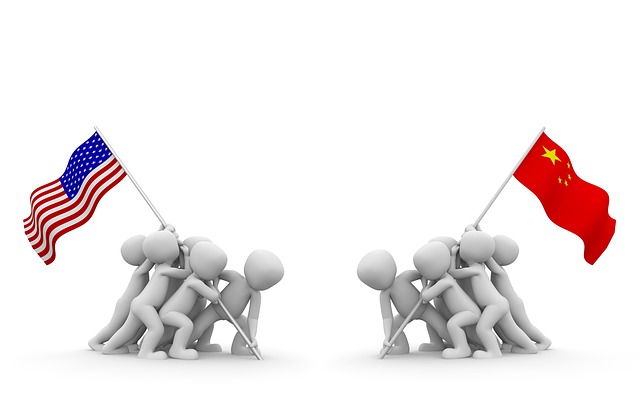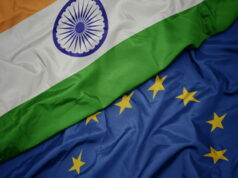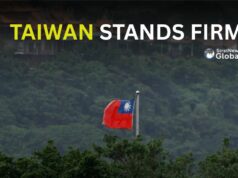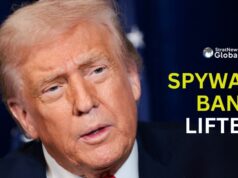NEW DELHI: The global economy is becoming more intertwined and innovation-driven, and this creativity needs to be supported by intellectual property (IP). For many entrepreneurs, investors and businesses, IP is the lifeblood of innovation but it is turning into a battleground between the world’s biggest economic powers because of the theft of such property. According to a recent report released by the Organisation for Economic Co-operation and Development (OECD) 3.3% of all global commerce is counterfeit leaving U.S. based companies most negatively affected. Recently, the U.S. placed China, Russia and five other countries on its annual blacklist. “China continues to be the largest origin economy for counterfeit and pirated goods,” according to the report.
Fight for IP: U.S. VS China
Imagine Apple without the Apple, Starbucks without the iconic twin-tailed siren logo and KFC without Colonel Harland Sanders’s face. Trademarks and patents can either take companies to new heights or can contribute to its failure. China, the largest manufacturing hub around the globe, has been illegally replicating or copying world class products and selling them globally at low prices. China now accounts for more than 10% of all trademark applications in the U.S. According to the World Intellectual Property Organisation (WIPO) out of 3.3 million patent applications, China accounted for roughly half of it. Artificial intelligence and wireless 5G network have always been one of the major sectors of focus for China and intellectual property is the key to it. Trademark and patent infringement is a key part of mounting tensions between China and the United States as they compete to grow in next-generation technologies. Therefore, infringement of patents and trademarks was the key concern of the “phase-one” trade agreement between both the countries.
A 2017 report by the IP commission estimated IP theft by China and other countries costs the U.S. economy between $225 billion and $600 billion per year. The intellectual property theft that has occurred between the U.S. and China alone is huge. In 2015, mainland China and Hong Kong accounted for 87% of counterfeit goods seized by the U.S. Customs and Border Patrol. According to CNBC Global CFO Council, one in five North American-based corporations says China has stolen their Intellectual Property.
China aims at achieving self-sufficiency in high tech industry by 2025 and dominating the global tech markets by 2049. It’s ‘Made in China 2025’ industrial policy aims for investments in areas like new generation information technology and advanced numerical control machine tools and robotics. There are two distinct ways Chinese companies reportedly steal U.S. IP: Corporate espionage and forced technology transfers.
US places India on ‘priority watch list’
India too is accused of violating U.S. patents. In its annual Special 301 Report last year, the Office of the United States Trade Representative (USTR) iterated India’s position on the ‘priority watch list’ and accused New Delhi of not acting to safeguard IP rights. Placement of a trading partner on the ‘priority watch list’ or ‘watch list’ indicates that problems exist in that country with respect to IP protection, enforcement, or market access for U.S. persons relying on IP. India remains on the ‘priority watch list’ this year too. The document reported that there has been inconsistency in progress towards IP protection and enforcement. Although IP enforcement in the online sphere has improved, lack of progress on long-standing IP concerns remain.
The USTR report cited India as one of the most challenging major economies with respect to protection and enforcement of IP because of lack of presumption of patent validity and narrow patentability criteria under The Indian Patents Act. Moreover, patent applications continue to carry costly and time consuming pre and post-grant oppositions, lengthy waiting duration to acquire patent grants and excessive reporting requirements. Though India has justified the limitation of IP protection as a way of promoting access to technologies, India maintains high custom duties directed at IP-intensive products.
According to the report, pharmaceutical stakeholders have been expressing concerns over whether India has a productive mechanism for the fast and early resolution of potential pharmaceutical patent disputes. Also, stakeholders are concerned over unfair commercial use, and unauthorised disclosure of undisclosed test or different data generated to receive marketing approval for pharmaceutical and agricultural products. USTR claims weak enforcement of IP by courts and police, the lack of familiarity with investigation techniques, the absence of a centralised IP enforcement agency along with poor coordination between state and national level actions, threatens to undercut the developments made last year against websites with pirated contents. The status of India as one of the top five source-countries for fake goods, as mentioned in the OECD report Trends in Trade in Counterfeit and Pirated Goods (2019), brings out the serious nature of counterfeiting and the ineffective level of enforcement.
While India depends on contract law to provide trade secret protection, this approach has been found effective only in situations where the trade secret owner and parties accused of misappropriation have a contractual relationship. No expressed criminal penalties are available for trade secret misappropriation in India. The copyright holders continue to report high levels of piracy particularly in online areas. In April 2021, India’s decision to abolish the Intellectual Property Appellate Board (IPAB) and redirect the IPAB cases to courts has created difficulty and uncertainty around adjudication of IP cases and copyright royalty rate setting. Also, India failed to resolve the recent long-standing challenges in protection of IP and resulted in new concerns for the right holder.
Not surprisingly, the U.S. believes India’s IPR regime is not propitious for innovation by foreigners, and it encourages export of counterfeit drugs and medicines. “Over the past year, India took steps to address intellectual property challenges and promote IP protection and enforcement. However, many of the actions have not yet translated into concrete benefits for innovators and creators, and long-standing deficiencies persist. India remains one of the world’s most challenging major economies with respect to protection and enforcement of IP,” an official US report said.
In conclusion, major economies such as China, Russia, India and the U.S. continue to face challenges and concerns regarding the protection of IP. Emergence of knowledge, digital revolution, and technological change including economic globalisation has led the rights holder to press for more and greater regulatory harmonisation and higher standards of protection worldwide. Therefore, the impact and significance of IPR in global trade cannot be underestimated. This can be seen through the various major steps that nation-states have taken for the protection of intellectual property.
(The views and opinions expressed in this article are those of the authors and do not necessarily reflect those of StratNews Global)





